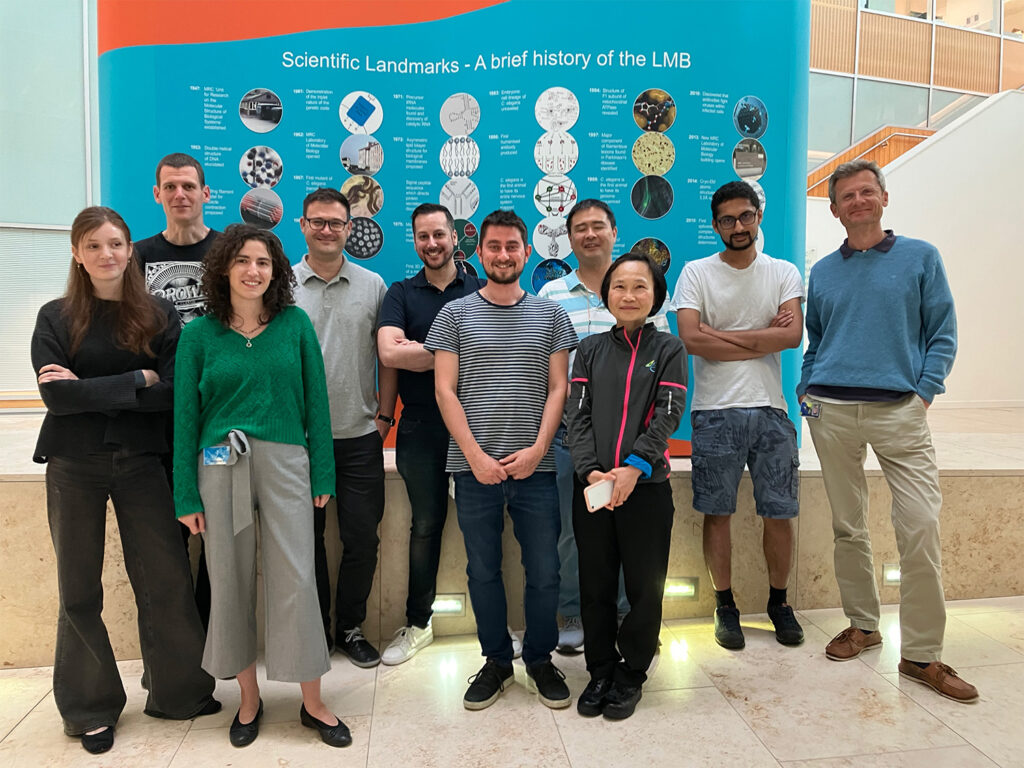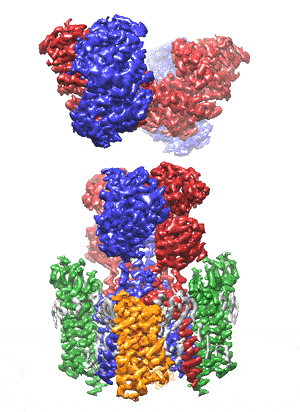Glutamate is the principal excitatory neurotransmitter in vertebrate central nervous systems. It triggers rapid signal transmission by opening glutamate receptor ion channels, which are the foundations of information transfer and storage in the brain. Malfunction of these receptors is implicated in various neurological disorders, thereby rendering them central drug targets.
Our research focusses on a predominant type of glutamate receptor, the AMPA receptor* (AMPAR), which mediates ultra-rapid signal transfer, and is selectively recruited into synapses during learning. AMPARs are uniquely versatile; they associate with an array of auxiliary subunits in a mosaic fashion across the brain, generating a receptor system capable of tuning information transfer at various time scales.
We take a multidisciplinary approach to study this receptor family at several levels of complexity. These include AMPAR structural biology (cryo-EM and molecular dynamics simulations), cell biology (super-resolution light microscopy and 2-photon imaging), and biophysics (patch-clamp electrophysiology).
Our core aims are to understand 1) the mechanisms underlying AMPAR signal transmission at the atomic level, and 2) how AMPAR regulation during synaptic plasticity contributes to learning. We also seek to develop improved AMPAR therapeutics.

